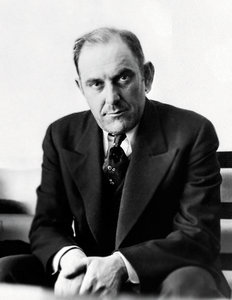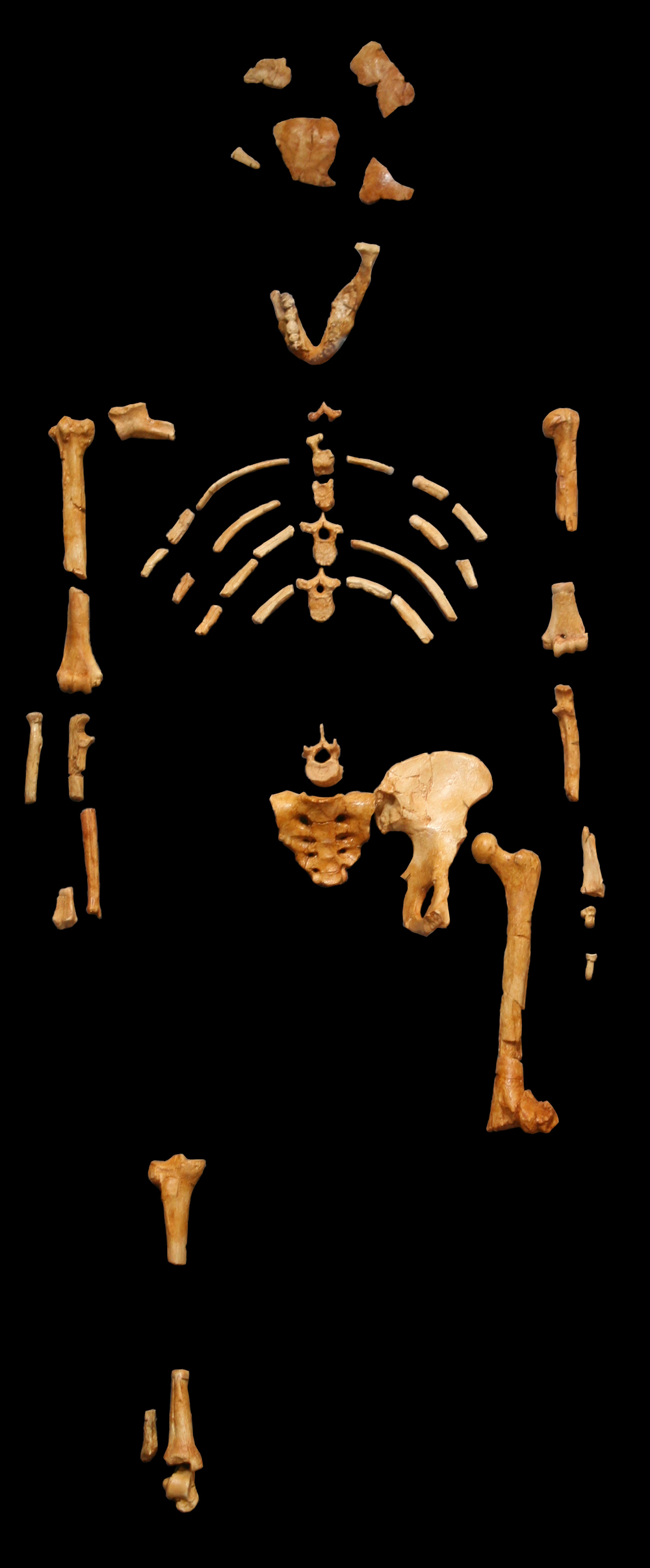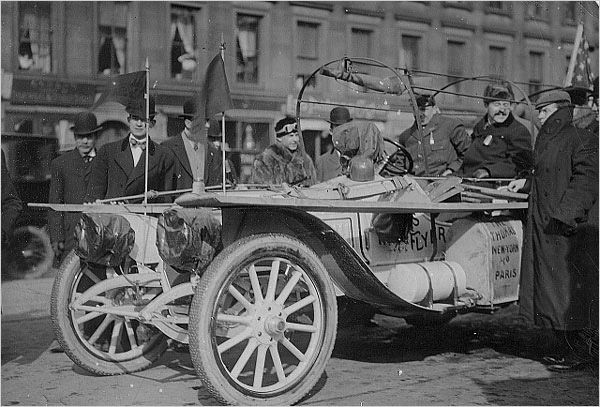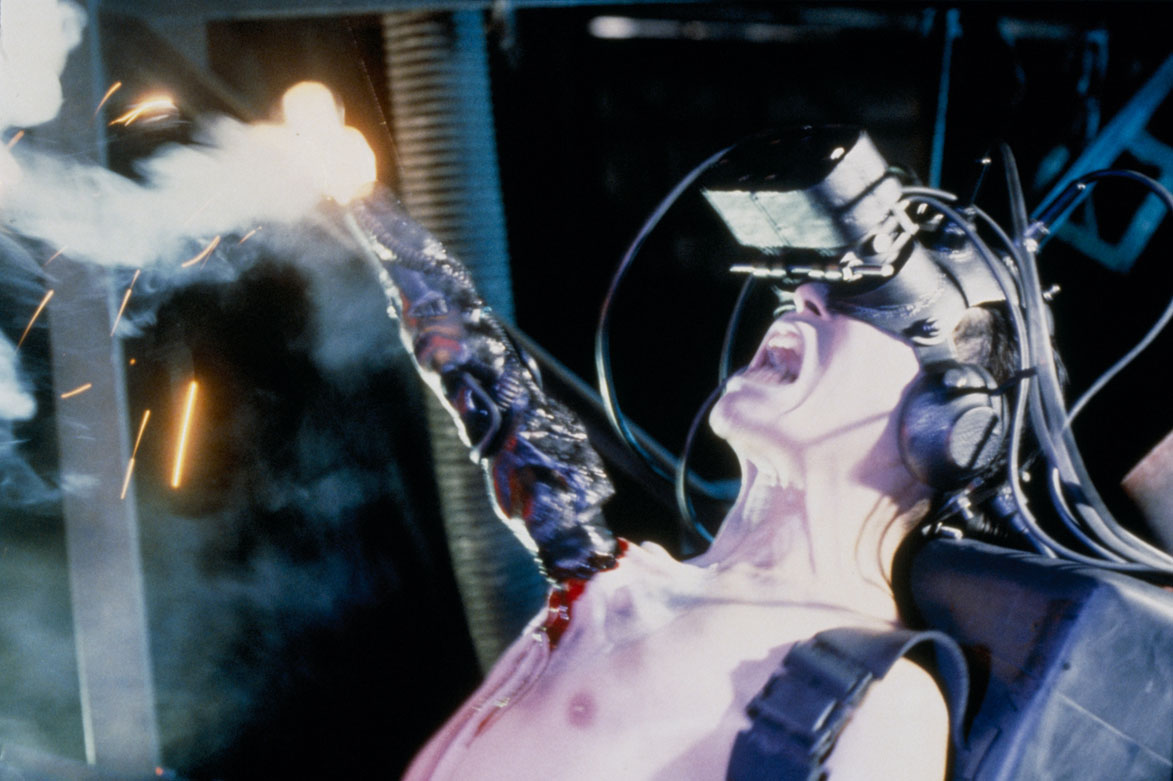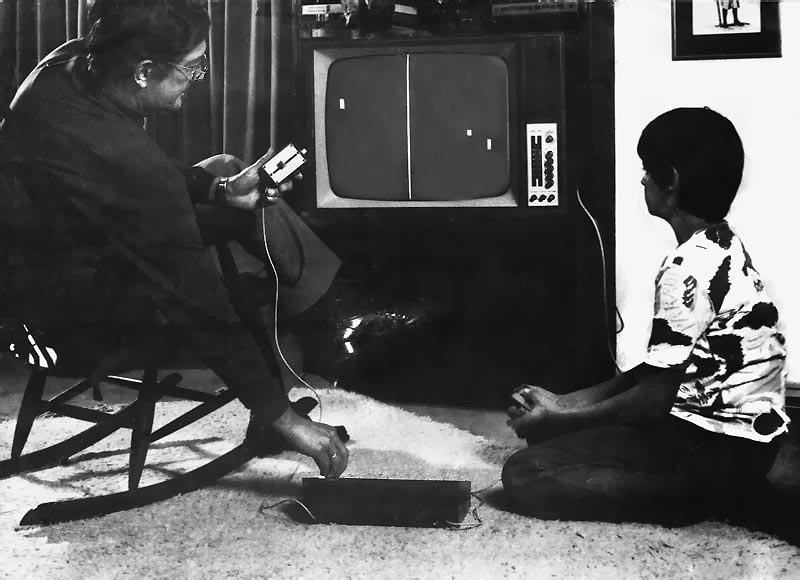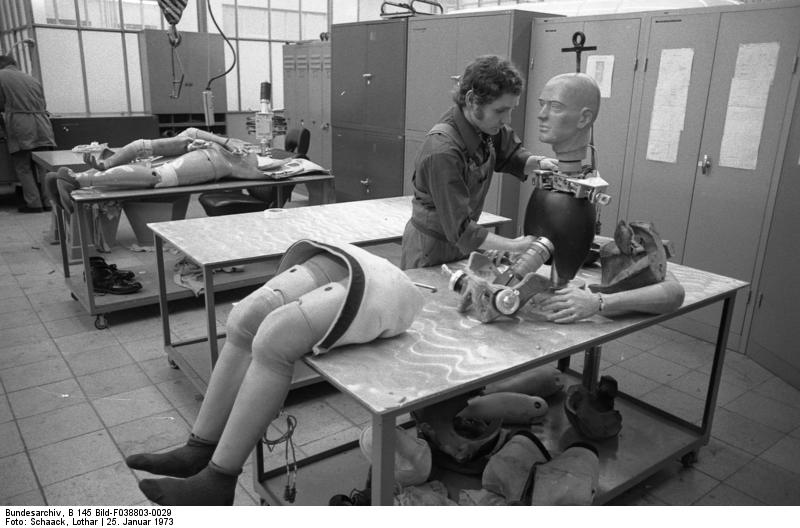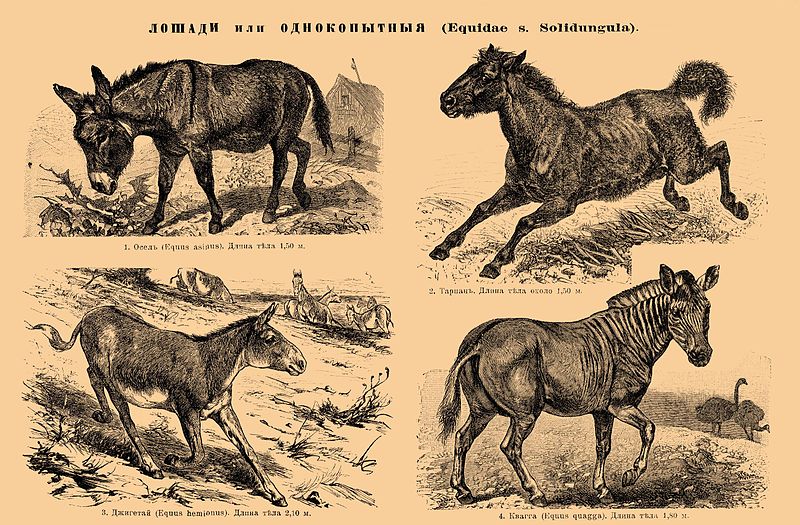Some search-engine keyphrases bringing traffic to Afflictor this week:
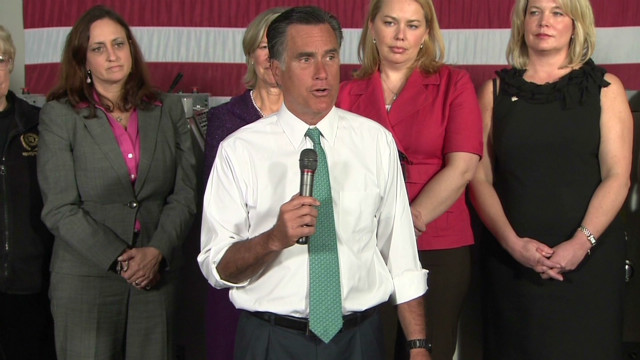
Afflictor: Thinking the equivalent of Mitt Romney’s Birther remark would be that no one’s ever asked to see President Obama’s marriage certificate because they know he has only one wife.
- Old Print Articles: Searching for valuables in rubbish (1886) + Government inspectors examine horse meat (1899).
- Featured Videos: Rod Serling teaches Steve Allen to play the home version of Pong (1972) + Stanford’s race car does 120 mph + Gore Vidal visits Merv Griffin in the wake of Ronald Reagan’s inauguration (1981) + Orson Welles answers questions the day after War of the Worlds (1938) + K•Tel celebrates Israel’s 25th anniversary (1973) + Great Race victor George Schuster appears on I’ve Got a Secret (1958) + Bell Labs shares breakthroughs in computer graphics (1968) + Robots are now inflatable.
- Recently Posted on NYC’s Craigslist: Even my turtles know I’m a fuckup + My memoirs may or may not be racist, but they are definitely awful + My life is governed by a lot of weird, specific rules, and I would like to inflict them on you.
- More and more, jobs will be outsourced to robots.
- Are we overestimating the danger of nuclear power?
- Bill Koch is building a faux Old West town, but you can’t visit.
- What Stewart Brand learned from the “Mother of All Demos.”
- China Miéville discusses the brave new future of books.
- Richard Dawkins guesses what genetic mapping might mean to us.
- Michael Steinberger recalls the strangeness of 1977’s U.S. Open.
- Researchers make advances toward a Fountain of Youth.
- Bio-hacking has not spread as quickly as computers have.
- Humanity’s been doomed many times in the last few decades.
- Venkat Rao argues the future is always arriving, but we deny it.
- When we argue for self-determination, we ignore the facts.
- The strange psychology behind waiting on line.
- The bizarreness of British bio-hackers is profiled.
- How we started using deodorant, stopped smelling like stables.
- Space elevators are cheaper and safer than rocket launchers.
- China is spending infrastructure money on futuristic projects.
- Read a 1992 letter which predicted where printed matter was heading.
- Judges are more lenient with those predisposed to criminality.
- Folding cars are here, but they’re probably not the future.
- Donkeys in Israel being used as wi-fi hotspots.
- A 1931 advertisement for a lit-cigarette dispenser.
- A brief note from 1886 about an elopement’s end.
- A brief note from 1887 about warring neighbors.
- A brief note from 1889 about a music lesson.
- This week’s Afflictor keyphrase searches.
Michael Steinberger has a fun, brief New York Times Magazine piece this weekend, “Queens Was Burning, Too,” which recalls another incendiary borough, which roiled all throughout the steamy months of 1977, the Summer of Sam, like John McEnroe on the wrong side of an “out” call at the U.S. Open. The opening:
“On a Sunday night midway through the 1977 U.S. Open, nearly 7,000 people gathered in the stadium at the West Side Tennis Club in Forest Hills, Queens, for a third-round match between the ninth-seeded Eddie Dibbs and an 18-year-old named John McEnroe, who was making his debut at the tournament that year. Two months earlier, McEnroe surprised the tennis world by reaching the semifinals of Wimbledon as a qualifier. His feathery touch dazzled the British fans while his combustive behavior led the British tabloids to nickname him Superbrat. Now McEnroe, who grew up in nearby Douglaston, looked poised to make a deep run at the Open. First, though, he had to get past Dibbs, a short, speedy player known as Fast Eddie.
Soon after the match started, a commotion in the stands halted play. A spectator had been shot in the leg; the bullet, the police later surmised, was fired from a nearby apartment building. At the time, New York was still reeling from the citywide blackout in July and the looting that followed. It had been terrorized for much of the summer by the Son of Sam, and now a scene straight out of Black Sunday, a film about a planned attack at the Super Bowl released earlier that year, seemed to be unfolding at the Open. ‘It had been a crazy summer in New York,’ says Bud Collins, the famed tennis commentator, who left the press box to investigate the disturbance, ‘and we were all up there wondering if another bullet was going to appear.’
Dibbs and McEnroe didn’t want to stick around to find out. As McEnroe later recalled, when an umpire told them what happened, Dibbs announced, ‘I’m out of here.’ Then the story was coincidentally revised: the fan hadn’t been shot, he’d gone into shock. The match eventually resumed with McEnroe beating Dibbs two sets to one. (At that time, early-round men’s matches at the Open were best-of-three.) Only later did they learn that it had indeed been gunfire.”
Tags: Bud Collins, Eddie Dibbs, John McEnroe, Michael Steinberger
Airplanes have been inflatable for decades, but what about robots? DARPA, which loves you to death, has the answer. From Ars Technica: “A DARPA-funded research project at Massachusetts-based iRobot has developed a series of prototype robots with inflatable parts. The robots, developed with researchers from Carnegie-Mellon University and inflatable engineering company ILC Dover, are part of the Defense Advanced Research Projects Agency’s program to create more mobile, more capable, and less expensive robots for the battlefield.”
This is so great. Gilbert King has put up a very well-written post at the Smithsonian site which recalls Hall of Fame con man Victor Lustig. Counterfeiters, confidence men and impostors are just like you and I, except they have more initiative. An excerpt:
“Secret Service agents finally had one of the world’s greatest imposters, wanted throughout Europe as well as in the United States. He’d amassed a fortune in schemes that were so grand and outlandish, few thought any of his victims could ever be so gullible. He’d sold the Eiffel Tower to a French scrap-metal dealer. He’d sold a ‘money box’ to countless greedy victims who believed that Lustig’s contraption was capable of printing perfectly replicated $100 bills. (Police noted that some ‘smart’ New York gamblers had paid $46,000 for one.) He had even duped some of the wealthiest and most dangerous mobsters—men like Al Capone, who never knew he’d been swindled.
Now the authorities were eager to question him about all of these activities, plus his possible role in several recent murders in New York and the shooting of Jack ‘Legs’ Diamond, who was staying in a hotel room down the hall from Lustig’s on the night he was attacked.
‘Count,’ one of the Secret Service agents said, ‘you’re the smoothest con man that ever lived.'” (Thanks Browser.)
Tags: Gilbert King, Victor Lustig
Researchers at Johns Hopkins have made a breakthrough in returning cells to pristine form, perhaps making possible an endless summer, a fountain of youth. What will it be like when we have all the time in the world? From the press release:
“Johns Hopkins scientists have developed a reliable method to turn the clock back on blood cells, restoring them to a primitive stem cell state from which they can then develop into any other type of cell in the body.
The work, described in the Aug. 8 issue of the journal Public Library of Science (PLoS), is ‘Chapter Two’ in an ongoing effort to efficiently and consistently convert adult blood cells into stem cells that are highly qualified for clinical and research use in place of human embryonic stem cells, says Elias Zambidis, M.D., Ph.D., assistant professor of oncology and pediatrics at the Johns Hopkins Institute for Cell Engineering and the Kimmel Cancer Center.
‘Taking a cell from an adult and converting it all the way back to the way it was when that person was a 6-day-old embryo creates a completely new biology toward our understanding of how cells age and what happens when things go wrong, as in cancer development,’ Zambidis says.”
Tags: Elias Zambidis
From the June 18, 1889 Brooklyn Daily Eagle:
“Kerwood, W. Va.–William Miller, a farmer, is dying from the effects of knife wounds inflicted by George Sell, a music teacher at Stemple Ridge. A few evenings ago Sell was conducting a song when a son of Miller interrupted and a fight ensued. Sell whipped young Miller. The father interfered and Sell disemboweled the elder Miller with a knife.”
Tags: George Sell, William Miller
Rachel Bilson was busy, so Playboy interviewed Richard Dawkins this month. From a give-and-take about what genetic mapping might mean to us:
“PLAYBOY: You’ve said you expect mankind will have a genetic book of the dead by 2050. How would that be helpful?
DAWKINS: Because we contain within us the genes that have survived through generations, you could theoretically read off a creature’s evolutionary history. ‘Ah, yes, this animal lived in the sea. This is the time when it lived in deserts. This bit shows it must have lived up mountains. And this shows it used to burrow.’
PLAYBOY: Could that help us bring back a dinosaur? You have suggested crossing a bird and a crocodile and maybe putting it in an ostrich egg.
DAWKINS: It would have to be more sophisticated than a cross. It’d have to be a merging.
PLAYBOY: Could we re-create Lucy?
DAWKINS: We already know the human genome and the chimpanzee genome, so you could make a sophisticated guess as to what the genome of the common ancestor might have been like. From that you might be able to grow an animal that was close to the common ancestor. And from that you might split the difference between that ancestral animal you re-created and a modern human and get Lucy.” (Thanks Browser.)
George Schuster, driver of the Thomas Flyer that won the New York-to-Paris “Great Race” of 1908, appears on I’ve Got a Secret five decades later. Prior to Schuster’s trek, no “automobilist” had driven across America during the winter.
Tags: George Schuster
I’ve never used an illegal drug in my life, so I’m the last person who would suggest other people turn themselves into pharmaceutical guinea pigs. And bio-hackers don’t only experiment with drugs, but with all sorts of gizmos they insert beneath their skin, hoping to push human evolution to its next phase. I think they’re crazy, but it still hard to criticize them.
What pioneering enterprise isn’t fraught with danger? Those who moved westward in America making Manifest Destiny possible were taking huge risks, and a number of them died. Astronauts exploring space for NASA (and for us) take great chances, and a number of them have perished. But I can’t say either gamble lacked great value. Now that a lot of exploration has moved inside of us, I likewise can’t condemn bio-hackers and their experimentation. It probably will lead to greater knowledge, but, you know, you go first. From “Grinders: The Cult of the Man Machine,” by Leo Benedictus at the Guardian:
“A common procedure is to implant a strong neodymium magnet beneath the surface of a person’s skin, often in the tip of the ring finger. This causes nearby magnetic fields – and even their strength and shape – to become detectable to the user, thanks to the subtle currents they provoke. For a party trick, they can also pick up metal objects or make other magnets move around.
Calling this a procedure, though, gives rather the wrong impression. Biohacking is not a field of medicine. Instead it is carried out either at home or in piercing shops, cleanly and carefully with a scalpel, but without an anaesthetic (which you need a licence for). If you think this sounds painful, you are correct.
Britain is the birthplace of modern transhumanism, as the field is known. Probably the most sophisticated implantation ever made can be found inside the left arm of Kevin Warwick, professor of cybernetics at the University of Reading, who can now control a robot arm by moving his own. The system also works the other way, so he can now sense his wife’s movements in his own body, after she had a similar implantation.”
Tags: Leo Benedictus
From Mark Potts’ Recovering Journalist (via the Atlantic), the opening of a 1992 letter by Bob Kaiser, Managing Editor of the Washington Post, which pinpointed exactly where print news was headed:
“August 6, 1992
To: Don Graham, Alan Spoon, Ralph Terkowitz. Tom Ferguson, Tuesday Group Vice Presidents
From: Bob Kaiser
John Sculley’s invitation to attend an Apple-organized conference
on the future of ‘multimedia’ – computers, telecommunications,
television and other entertainment media, and traditional news
media – gave me a good opportunity to learn and to think about The
Post’s place in a fast-changing technological environment. This is
a brief report on the conference and thoughts that occurred to me
while attending.
+ + +
Alan Kay, sometimes described as the intellectual forefather of the
personal computer, offered a cautionary analogy that seemed to
apply to us. It involves the common frog. You can put a frog in a
pot of water and slowly raise the temperature under the pot until
it boils, but the frog will never jump. Its nervous system cannot
detect slight changes in temperature.
The Post is not in a pot of water, and we’re smarter than the
average frog. But we do find ourselves swimming in an electronic
sea where we could eventually be devoured — or ignored as an
unnecessary anachronism. Our goal, obviously, is to avoid getting
boiled as the electronic revolution continues.
I was taken aback by predictions at the conference about the next
stage of the computer revolution. It was offered as an
indisputable fact that the rate of technological advancement is
actually increasing. Dave Nagel, the impressive head of Apple’s
Advanced Technology Group, predicted “the three billions” would be
a reality by the end of this decade: relatively cheap personal
computers with a billion bits of memory (60 million is common
today), with microprocessors that can process a billion
instructions per second (vs. about 50 million today) that can
transmit data to other computers at a billion bits per second (vs.
15-20 million today). At that point the PC will be a virtual
supercomputer, and the easy transmission and storage of large
quantities of text, moving and still pictures, graphics, etc., will
be a reality. Eight years from now.
I asked many purported wizards at the conference if they thought
Nagel was being overoptimistic. None thought so. The machines he
envisioned will have the power to become vastly more user-friendly
than today’s PC’s. They will probably be able to take voice
instructions, and read commands written by hand or an electronic
notepad, or right on the screen. None of this is science fiction –
– it’s just around the corner.”
Tags: Bob Kaiser, Mark Potts
17 paintings of a goat.
It is the same goat, but the paintings are different. the smallest is the size of a book. the largest is about twice that size. they are free, but you must take all 17.
Please keep them together.
Leave a message telling me why you want them, and i will choose.
Trash has always been full of treasure and those who won contracts to remove offal from districts of Brooklyn in the 1800s checked the refuse closely for rixhes before chucking it, because you never knew what was going to turn up. And it was no different in London. From the July 4, 1886 Brooklyn Daily Eagle:
“‘You would be surprised,’ sad a well known offal contractor to an Eagle reporter recently, ‘at the large number of valuables found in the city’s dumping grounds. Although the men in charge of the dumps deny that anything of value is ever found, I can vouch that they don’t always tell the truth. Miscellaneous articles, such as silver teaspoons, knives and forks, shoes and clothing, in good and bad condition, are picked up daily, but it frequently happens that gold watches and diamonds are among the valuables found. Dead babies a few years ago were not an uncommon occurrence. In the government grounds ten cents is charged for each load dumped. Articles of an unusual character are only found in the ashes and swill refuse. Ladies washing dishes will drop rings in the swill, and by the time they have missed them the swill will be on its way either to the dumping grounds or the piggeries. Diamonds, from earrings and rings, are lost in the same manner.
In London, the contract for examining ashes and swill is awarded to the highest bidder. The method employed by the contractor to ascertain whether any articles of value are contained in the rubbish is a novel one. The carts are dumped on a screen, which, after having become filled, is elevated into the air. A dozen men dressed in rubber suits, without pockets, are set to work on the screen. These men go over the ashes and the offal carefully, and in case anything valuable is found it is turned over at once to the contractor and superintendent. As the workers wear pocketless clothing they can secure nothing about their persons. After all the ashes have been thoroughly screened they are covered and a new lot examined.”
Gore Vidal visits Merv Griffin just days after Ronald Reagan’s inauguration.
Tags: Gore Vidal, Merv Girffin, Ronald Reagan
A section from a great bundle of ideas about the future of books presented by China Miéville in a lecture at the Edinburgh International Book Festival:
“In fact what’s becoming obvious – an intriguing counterpoint to the growth in experiment – is the tenacity of relatively traditional narrative-arc-shaped fiction. But you don’t radically restructure how the novel’s distributed and not have an impact on its form. Not only do we approach an era when absolutely no one who really doesn’t want to pay for a book will have to, but one in which the digital availability of the text alters the relationship between reader, writer, and book. The text won’t be closed.
It never was, of course – think of the scrivener’s edit, the monk’s mashup – but it’s going to be even less so. Anyone who wants to shove their hands into a book and grub about in its innards, add to and subtract from it, and pass it on, will, in this age of distributed text, be able to do so without much difficulty, and some are already starting.
One response might be a rearguard clamping down, as in the punitive model of so-called antipiracy action. About which here I’ll only say – as someone very keen to continue to make a living from writing – that it’s disingenuous, hypocritical, ineffectual, misunderstands the polyvalent causes and effects of online sharing, is moribund, and complicit with toxicity.” (Thanks Browser.)
Tags: China Miéville
So strange and wonderful: In 1972, Rod Serling introduces I’ve Got a Secret host Steve Allen to the home version of the video game Pong. Begins at the 15:40 mark.
Tags: Rod Serling, Steve Allen
Who really knows what the economic future holds for China? But that country is currently pouring huge amounts of money into infrastructure, trying to create an advantage for its next several generations. From “Cities of the Future: Made In China,” Dustin Roasa’s new Foreign Policy article, which collects many of that country’s boldest ideas for tomorrow and beyond:
“For much of the 20th century, the world looked to American cities for a glimpse of the future. Places like New York and Chicago had the tallest skyscrapers, the newest airports, the fastest highways, and the best electricity grids.
But now, just 12 years into the Asian Century, the city of the future has picked up and moved to China. No less than U.S. Vice President Joe Biden recognized this when he said not long ago, ‘If I blindfolded Americans and took them into some of the airports or ports in China and then took them to one in any one of your cities, in the middle of the night … and then said, ‘Which one is an American? Which one is in your city in America? And which one’s in China?’ most Americans would say, ‘Well, that great one is in America.’ It’s not.’ The speech raised eyebrows among conservative commentators, but it points out the obvious to anyone who has spent time in Beijing, Hong Kong, or Shanghai (or even lesser-known cities like Shenzhen and Dalian, for that matter).
In these cities, visitors arrive at glittering, architecturally arresting airports before being whisked by electric taxis into city centers populated by modular green skyscrapers. In the not-so-distant future, they’ll hop on traffic-straddling buses powered by safe, clean solar panels. With China now spending some $500 billion annually on infrastructure — 9 percent of its GDP, well above the rates in the United States and Europe — and with the country’s population undergoing the largest rural-to-urban migration in human history, the decisions it makes about its cities will affect the future of urban areas everywhere. Want to know where urban technology is going? Take the vice president’s advice and head east.”
Tags: Dustin Roasa
We tell ourselves stories in order to live, yes, but what if we are telling the wrong stories? The ones that flatter our egos, drive us into the false security of a mythical past instead of an uncertain future, expand our delusions? From Firmin DeBrabander in the New York Times:
“In Chisago County, Minn., The Times’s reporters spoke with residents who supported the Tea Party and its proposed cuts to federal spending, even while they admitted they could not get by without government support. Tea Party aficionados, and many on the extreme right of the Republican party for that matter, are typically characterized as self-sufficient middle class folk, angry about sustaining the idle poor with their tax dollars. Chisago County revealed a different aspect of this anger: economically struggling Americans professing a robust individualism and self-determination, frustrated with their failures to achieve that ideal.
Why the stubborn insistence on self-determination, in spite of the facts? One might say there is something profoundly American in this. It’s our fierce individualism shining through. Residents of Chisago County are clinging to notions of past self-reliance before the recession, before the welfare state. It’s admirable in a way. Alternately, it evokes the delusional autonomy of Freud’s poor ego.
These people, like many across the nation, rely on government assistance, but pretend they don’t. They even resent the government for their reliance. If they looked closely though, they’d see that we are all thoroughly saturated with government assistance in this country: farm subsidies that lower food prices for us all, mortgage interest deductions that disproportionately favor the rich, federal mortgage guarantees that keep interest rates low, a bloated Department of Defense that sustains entire sectors of the economy and puts hundreds of thousands of people to work. We can hardly fathom the depth of our dependence on government, and pretend we are bold individualists instead.”
Tags: Firmin DeBrabander
The opening of “Welcome to the Future Nauseous,” a really fun Venkat Rao essay that argues that the future is always arriving and that we are unwilling or unable to process and acknowledge it so we instead assign it to some distant point:
“Both science fiction and futurism seem to miss an important piece of how the future actually turns into the present. They fail to capture the way we don’t seem to notice when the future actually arrives.
Sure, we can all see the small clues all around us: cellphones, laptops, Facebook, Prius cars on the street. Yet, somehow, the future always seems like something that is going to happen rather than something that is happening; future perfect rather than present-continuous. Even the nearest of near-term science fiction seems to evolve at some fixed receding-horizon distance from the present.
There is an unexplained cognitive dissonance between changing-reality-as-experienced and change as imagined, and I don’t mean specifics of failed and successful predictions.
My new explanation is this: we live in a continuous state of manufactured normalcy. There are mechanisms that operate — a mix of natural, emergent and designed — that work to prevent us from realizing that the future is actually happening as we speak. To really understand the world and how it is evolving, you need to break through this manufactured normalcy field. Unfortunately, that leads, as we will see, to a kind of existential nausea.” (Thanks TETW.)
Tags: Venkat Rao
In 1973, K-Tel celebrated (i.e., exploited for cash) Israel’s 25th anniversary. Yes, a song by Sammy Davis, Jr., a famous convert, is included.
See also:
Some scientists believe that space elevators, which would replace dangerous and costly rocket launchers and lift crafts into orbit rather than blasting them there, may be just a decade away. That doesn’t seem like a realistic timeline even if we master the concept, though further down the line it’s plausible. From Richard Hollingham at the BBC:
“Rockets are dangerous, complicated and relatively unreliable. No-one has yet built a launcher that is guaranteed to work every time. A misaligned switch, loose bolt or programming error can lead to disaster or, with a human crew, a potential tragedy.
Rockets are also incredibly expensive – even the cheapest launch will set you back some $12 million, meaning the cost of any cargo costs a staggering $16,700 per kilogram. Although the funky new space planes being developed, such as Britain’s Skylon or Virgin’s SpaceShipTwo, will slash the costs of getting into space, they are still based on rocket technology – using sheer brute force to escape the clutches of gravity.
But there is a radical alternative. Science fiction fans have long been familiar with space elevators. Popularised by Arthur C Clarke, the concept of an elevator from the Earth to orbit has been around for more than a century. In the space operas of Iain M Banks or Alastair Reynolds, space elevators are pretty much taken for granted – they’re what advanced civilisations use to leave their planets.”
Tags: Richard Hollingham
It’s not April 1st, so I’ll trust this Gizmodo story by Tom Pritchard which reports that an Israeli theme park has enabled donkeys with wi-fi. The opening:
“Step aside Hobo Wi-Fi, there’s a new, better way for people to get their internet on the go. Introducing Wi-Fi enabled donkeys from Israel – ancient transport now updated for the 21st century.
Kfar Kedem is a historical theme park with the purpose of reenacting life as it was 2000 years ago, including the ever popular donkey ride, now with a twist. Currently five of the donkeys are walking Wi-Fi hotspots with future plans to expand to the other 25 donkeys the park owns. If you ever take a visit it, watch yourself in case you’re run over by a wayward child on the back of the donkey who’s too busy Instagramming to look where he’s going.”
Tags: Tom Pritchard
You can keep going around in this circle for a long time: Criminals who have brain defects have less control over their actions so judges have a tendency to give them shorter sentences so they are returned sooner to society where they have less control over their actions. That’s at least the in vitro conclusion drawn from a recent experiment that presented neurobiological evidence to judges in hypothetical cases. From Benedict Carey in the New York Times:
“In the study, three researchers at the University of Utah tracked down 181 state judges from 19 states who agreed to read a fictional case file and assign a sentence to an offender, ‘Jonathan Donahue,’ convicted of beating a restaurant manager senseless with the butt of a gun. All of the judges learned in their files that Mr. Donahue had been identified as a psychopath based on a standard interview — that is, he had a history of aggressive acts without showing empathy.
The case files distributed to the judges were identical, except that half included testimony from a scientist described as ‘a neurobiologist and renowned expert on the causes of psychopathy,’ who said that the defendant had inherited a gene linked to violent, aggressive behavior. This testimony described how the gene variant altered the development of brain areas that generate and manage emotion.
The account is an accurate description of one theory of how brain development may underlie aggressive behavior. Its applicability to any individual is unknown, however, given that many other factors could increase the likelihood of violence, researchers said.
The judges who read this testimony gave Mr. Donahue sentences that ranged from one to 41 years in prison, a number that varied with state guidelines. But the average was 13 years — a full year less than the average sentence issued by the judges who had not seen the testimony about genetics and the brain.”
Tags: Benedict Carey




